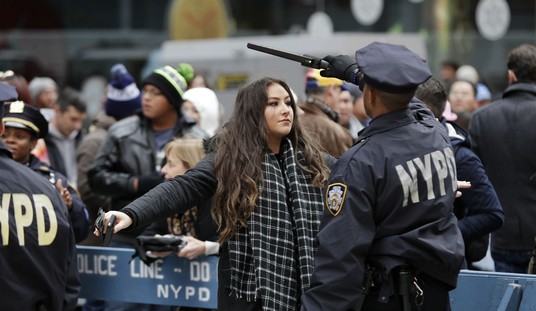From the recently released report by the Connecticut state attorney’s office in Danbury on the shootings at Sandy Hook Elementary School:
[Nancy Lanza] was concerned about him and said that he hadn’t gone anywhere in three months and would only communicate with her by e-mail, though they were living in the same house. … The mother did the shooter’s laundry on a daily basis as the shooter often changed clothing during the day. She was not allowed in the shooter’s room, however, even to clean. No one was allowed in his room. The shooter disliked birthdays, Christmas and holidays. He would not allow his mother to put up a Christmas tree. The mother explained it by saying that shooter had no emotions or feelings. The mother also got rid of a cat because the shooter did not want it in the house.
When I read this, my first inclination was to think that it was a case of bad parenting — Adam Lanza, who shot and killed twenty children and six adults at Sandy Hook Elementary School, was obviously a kid in need of discipline. There was clearly a breakdown in the authority structure in the home. My husband and I would not have tolerated our children dictating what we were “allowed” to do in our own home. Indeed, we probably would have had to suppress our laughter if they had ever attempted to launch such a coup d’état. When one of our sons went through a bedroom door-slamming phase, out came the screwdriver and down came the bedroom door until he understood that there would be no door-slamming while he was living under our roof. If one of our kids had ever tried to use the silent treatment as a weapon he would have been met with the loss of privileges and electronics — the car, the computer, the internet, the cell phone.
It seems like these behaviors would be easy enough to solve with a little tough love, right?
Except that Adam Lanza wasn’t like my kids.
The report describes Lanza’s emotional issues:
It was reported that his school issues related to his identified emotional and/or Pervasive Developmental Disorder (PDD) spectrum behaviors. His high level of anxiety, Asperger’s characteristics, Obsessive Compulsive Disorder (OCD) concerns and sensory issues all impacted his performance to a significant degree, limiting his participation in a general education curriculum. The shooter refused to take suggested medication and did not engage in suggested behavior therapies.
Lanza was a young man with a lot of issues. Those of us with “normal” kids really can’t begin to comprehend the challenges of life with someone who suffers from what Shannon Royce from Chosen Families calls “hidden disabilities ” — conditions that don’t show physical markers on the outside. Hidden disabilities include the autism spectrum as well as mental health concerns like bipolar disorder, depression, schizophrenia and neurological issues such as epilepsy or Tourette’s.
In the wake of the Sandy Hook Elementary School shootings, there was a blog post at Huffington Post from a mother who wrote “I Am Adam Lanza’s Mother.” She shared the heartbreaking story of her 13-year-old son’s battle with mental illness and described what life is like for families like hers:
I live with a son who is mentally ill. I love my son. But he terrifies me.
A few weeks ago, Michael pulled a knife and threatened to kill me and then himself after I asked him to return his overdue library books. His 7 and 9 year old siblings knew the safety plan — they ran to the car and locked the doors before I even asked them to. I managed to get the knife from Michael, then methodically collected all the sharp objects in the house into a single Tupperware container that now travels with me. Through it all, he continued to scream insults at me and threaten to kill or hurt me.
That conflict ended with three burly police officers and a paramedic wrestling my son onto a gurney for an expensive ambulance ride to the local emergency room. The mental hospital didn’t have any beds that day, and Michael calmed down nicely in the ER, so they sent us home with a prescription for Zyprexa and a follow-up visit with a local pediatric psychiatrist.
Speaking about Adam Lanza’s mother, Shannon Royce said, “There is no way to understand what this mom has dealt with over the years in all of her efforts to get the help he needs to make sure that his needs are met in the school system, to try to keep him engaged with her personally and with others. The challenge of her daily life, frankly, is unfathomable to most of us and we have to recognize that.”
When a child has an obvious physical disability, it’s not difficult to imagine the hardships the families endure. With hidden disabilities, it is much harder to put ourselves in their shoes. Mental illness has a tendency to consume a family’s life, leading to isolation and loneliness. The stigma attached to mental disorders exacerbates those tendencies because those on the outside sometimes fear what they do not understand. Parents whose children suffer from mental illness contend not only with the physical and mental exhaustion that accompanies caregiving, but they also battle the shame and stigma attached to the disabilities.
In the case of Adam Lanza, his mother was dealing with a 20-year-old young man who was becoming increasingly reclusive , mentally disturbed, and evil — a young man who refused to take the medications prescribed for him. Though we’ll never know exactly what went on in that home, it’s likely that Lanza’s mother faced the difficult choice of turning him out onto the streets — where he could end up in jail or homeless — or allowing him to remain at home, where she could at least know that he was safe. Tough love sounds good in theory, but when you are dealing with individuals suffering from mental illness, the rules change. Lanza’s mother had said she was not afraid of him and none of the psychological reports indicated any concerns about him being a danger to himself or others. Unless he demonstrated an imminent threat, there were few options for helping a 20 year old who did not want to be helped. And in fact, the report said that Lanza’s mental status was “no defense to his conduct.”
The point is not to judge whether or not Nancy Lanza was a good mother. We will never be able to hear her side of the story because she was her son’s first victim. But the tragedy should cause us to look around for families that are bearing the incredible load of mental illness in their lives. There are families in our communities and churches that are overwhelmed and exhausted from the challenges of dealing with very difficult children day in and day out. Instead of judging them and offering them unsolicited parenting advice, perhaps we could serve them — and our communities — better by offering support and understanding. Instead of focusing on passing new gun laws and restrictions on mentally ill individuals, we could better help these families if communities, neighbors, and churches reached out and offered support and assistance.













Join the conversation as a VIP Member